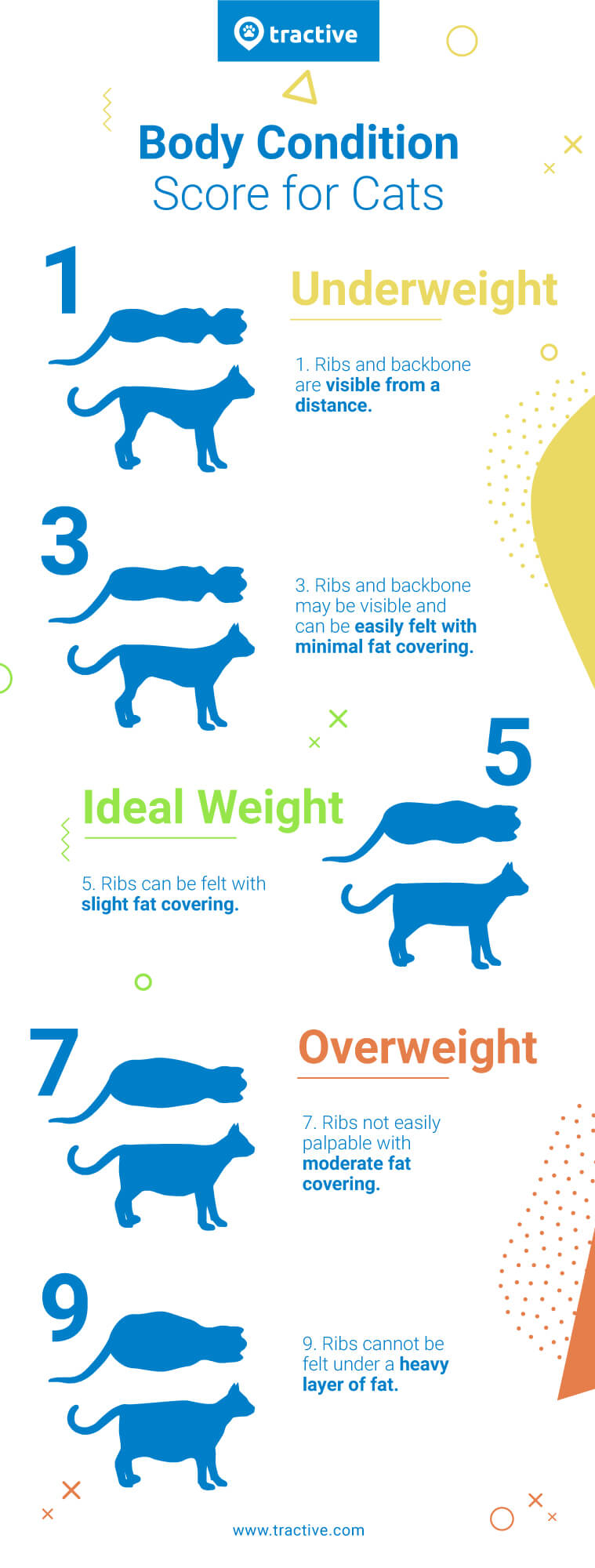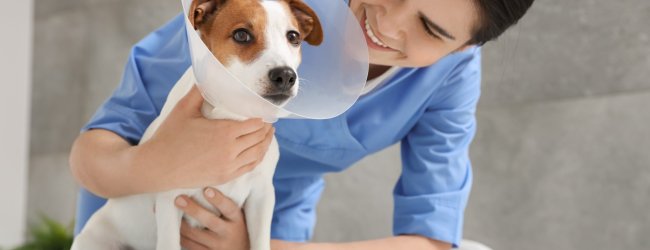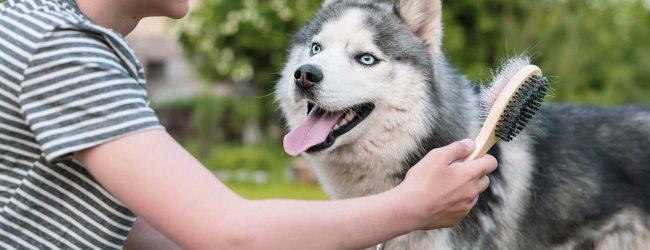 Approved by Dr. Dwight Alleyne, DVM
Approved by Dr. Dwight Alleyne, DVM How To Help An Overweight Cat Lose Weight
Got an overweight cat at home? Wondering how they got there - and how to help them lose some pounds? Here's how to get started - and stick to their weight-loss routine for the long run.
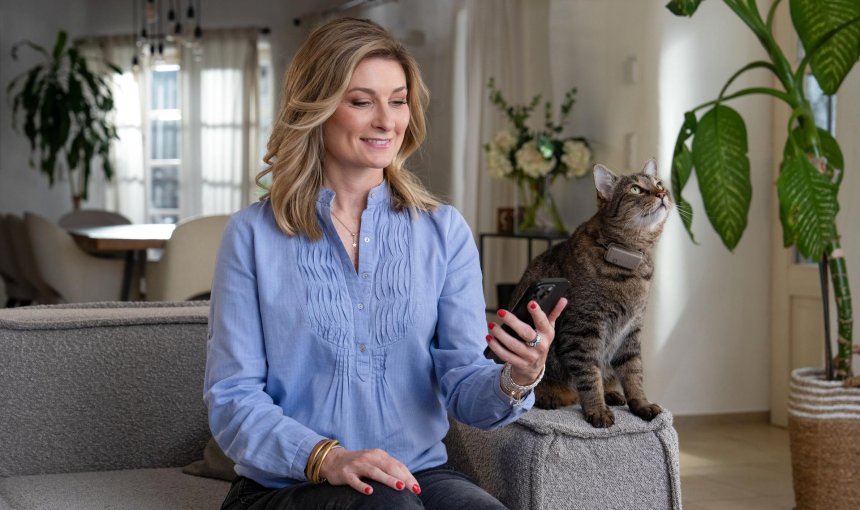
Obesity in cats is on the rise and it’s bad news for our furry friends – and for us. Because left untreated, an overweight cat’s weight problem will ultimately lead to worse health and lower quality of life. Here’s how to help yours lose some of those extra pounds – plus how tracking your cat’s daily activity can help you stay motivated for the long run.

Find out where your cat spends their time.
Read moreOverweight cats: A growing issue
According to a 2018 study by the Association for Pet Obesity Prevention, 59.5% of cats in the U.S. are classified as overweight or obese¹. Which opens up their risk for health issues like:
- Arthritis
- Joint stress and injuries such as hip dysplasia
- Diabetes mellitus
- Heart disease
- High blood pressure
- Urinary tract disease
- Cancer
- Decreased immune function
- Dystocia (birthing problems)
- Breathing problems
- Hepatic lipidosis (fat deposits in liver)
- Breathing problems, including wheezing or snoring during sleep
A vet-approved and carefully implemented weight reduction plan is the best way to help your overweight kitty take back their full health. Even better if you’re monitoring how many calories your cat is eating – and burning. (And making sure they’re burning more than they eat, so that they lose weight.)
💡An Activity Tracker for cats can help you figure out how many calories your cat has burned from being on the move all day. So you can portion out their meals accordingly and have data to help you help your cat lose those extra pounds.
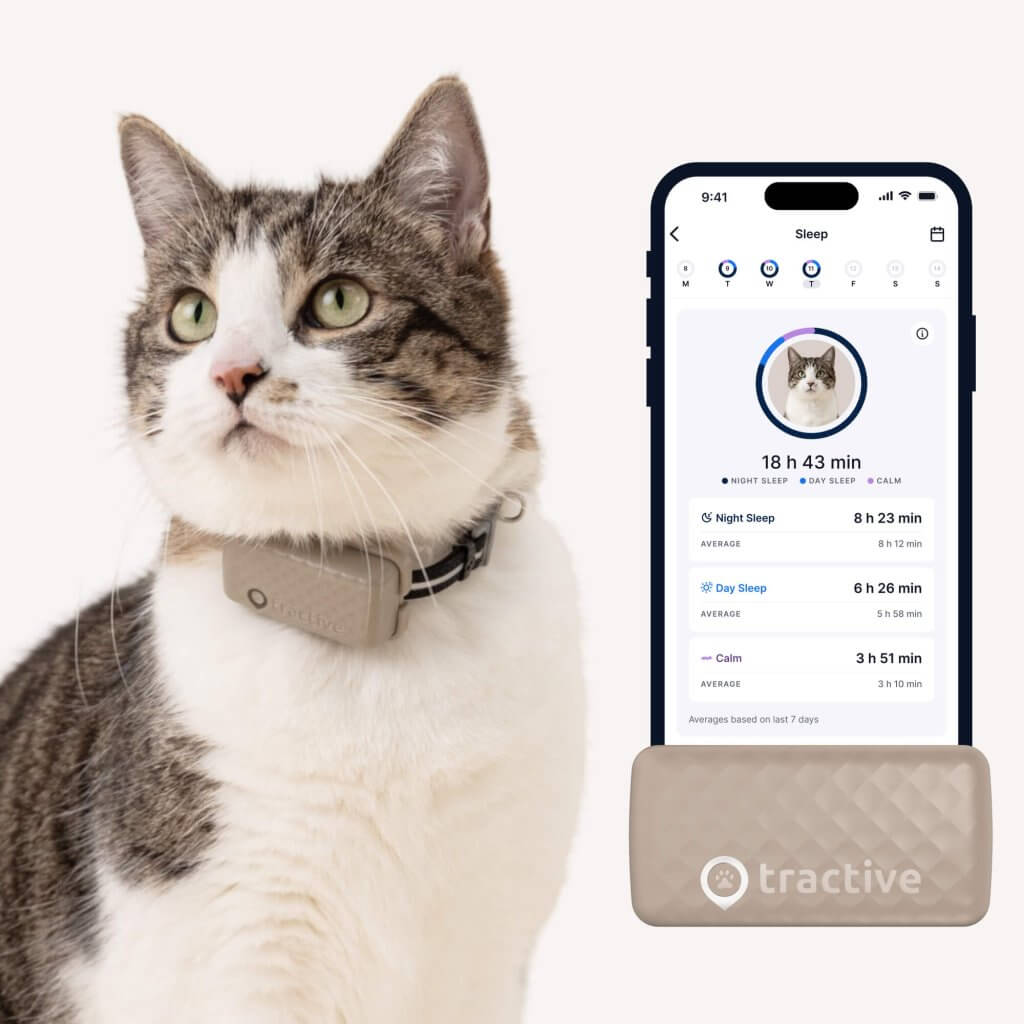
Help your cat stay fit and healthy
Get a complete overview of how much exercise and rest they’re getting. Compare their activity to that of similar cats. Set daily goals.
How do I know if my cat is overweight?
On average, domestic cats should weigh about 8 – 10 pounds (3.6 – 4.4 kg). However, factors like your cat’s age and breed can also play a role in their weight. If they weigh 10-20% heavier than the ideal weight, a cat may be classified as overweight. If a cat’s body weight is 20% or more than what is considered normal or healthy, then the cat is classified as obese.²
A body condition score chart for cats can help you check and assess the weight of your cat. It uses 9 different ratings to describe a cat’s body weight and condition.
Start by running both hands, palms down, across your cat’s rib cage. Take a look at your cat from the side and above. That way, you can make use of the scale below and determine if your cat is underweight, at an ideal weight, or overweight. Just keep in mind: a body condition score of 4.5-5 is considered the healthy range for cats.
Why is my cat overweight? The main causes of obesity in cats
Just like us, cats gain weight when they eat more calories than they burn. This excess energy gets stored in their bodies as fat. Which could be due to:
- Diet and feeding
Diets high in carbohydrates and fats, rather than protein, can especially lead to weight gain. In the wild, cats would naturally consume a protein-rich diet based on meat. - A sedentary lifestyle
Wild cats also tend be on the move more often – keeping them trim enough to run away from predators and chase down prey. Which might not be the case with indoor cats. - Free feeding
Or letting a cat eat at anytime of day by leaving out a bowl of dry food for them. Dry food often contains a high amount of carbohydrates and fat, leading your cat to put on the pounds. - Breed
Some purebred cat varieties are less likely to carry excess weight than their mixed breed counterparts. For example, British Shorthairs, Maine Coons, and Savannah cats might be more likely to gain weight than other breeds. - Sex
With male cats being more likely to gain weight than female cats.2 - Reproductive status
Neutered cats might grow a bit less active over time due to hormonal changes. If you’re feeding them the exact same amount as before, they might be eating more calories than they burn. - Age
Older cats are more likely to gain weight than younger cats. (Likely due to slowing down with age – and being less active overall.) - Medications
Especially those that affect appetite (i.e., making your cat feel hungrier than usual) or metabolic rate (i.e., making your cat less active than usual.) All of which can have an impact on weight gain.
How to help your overweight cat lose weight
If you’re ready to support your cat in living their healthiest life, we’re right there with you. There’s a lot you can do to adjust their feeding and playtime – plus regularly monitor their activity and weight to ensure they’re hitting their goals.
Just remember rapid weight loss in cats can lead to serious health problems, like hepatic lipidosis. So when it comes to helping your cat lose weight, your goal should be gradual weight loss over rapid. Meaning, aim for your cat to lose 1-2% of body weight per week.
As always, work with your vet to figure out how to get started – and stick to your cat’s weight-loss routine.
Start a calorie-controlled diet.
Some cats tend to be grazers – i.e., nibbling on treats or morsels all day long in small amounts. Which, sadly, can lead them to pack on the pounds over time. Which is where it makes sense to figure out your cat’s current daily calorie intake – and together with your vet, figure out how many calories would be ideal for them to consume per day, in line with your weight-reduction plan.
⚠️ Never put an overweight or obese cat on a diet without the supervision of your vet.
Rather, you could install an automatic feeder that can dispense a specific quantity of food. This can be helpful for portion control and helping your cat eat enough to get all the nutrients they need – without overdoing it on the calories.
Feed your cat at meal times.
As an alternative to free feeding, try feeding your cat meals at a certain time of day, using canned wet food. This canned food contains more protein and a higher water content, which will give your cat a balanced diet and ensure their health in the long run.
In addition, limit treats to 10% of your cat’s diet, and spread them out over play periods. Plus, make sure your cat drinks enough water.
Figure out if your cat’s been getting fed elsewhere
Poking around your cat’s daily habits can help you figure out if their outdoor wanderings have gotten them some extra nibbles and treats from your neighbors (or worse yet, the local trash heap!) Else, one of your housemates, friends, or loved ones has been feeding them extra. Which is where it makes sense to set some hard boundaries regarding your cat’s diet. One of your kids (or the neighbors’) might just end up feeding your cat something potentially toxic completely by accident, without knowing any better!
Also, make sure to monitor your cat while you’re busy cooking. Even scraps or bits of common kitchen ingredients (like onions, garlic, and mushrooms) can make them very sick if they bite, lick, or taste it by accident.
Bump up your playtime & exercise
Here are a couple of ways you can encourage your indoor cat to get more active:
- Use a food puzzle toy to give them a healthy challenge before feeding.
- Make them go up and down the stairs.
- Encourage a few healthy exercises before feeding.
- Consider letting the cat outdoors to play, chase, hunt, run, climb trees, etc.
- (Gently) see if your cat likes swimming.
- Cats love boxes– set some up for your cat to jump into!
- Get a cat tree, scratching posts, or vertical perches they can climb on.
- Consider getting a second pet as a playmate.
- Use a kitty-treadmill.
- Encourage your cat’s prey drive with a laser-pointer.
- Invest in some moving toys, such as a robotic mouse.
- Place your cat’s favorite bed in a place where they need to jump to reach it.
Most importantly: make playtime a regular priority. Besides helping your cat shed some extra pounds, it’ll also help you two spend some quality time together.
Read more: How To Get A Cat To Exercise: Keeping Our Feline Friends Happy and Healthy
Track your cat’s calories – both eaten & burned
Besides the calories your cat is eating, it also makes sense to track how many calories they’re burning from activity and exercise. This can help you better plan out their meals, figure out if they need more playtime, and have proper data to help you stick to your diet plan.
💡With an Activity Tracker for cats, you can figure out how many minutes of exercise they’ve gotten all day – down to how many calories they’ve burned. Eliminating the need for any guesswork or risking over- or under-feeding them.
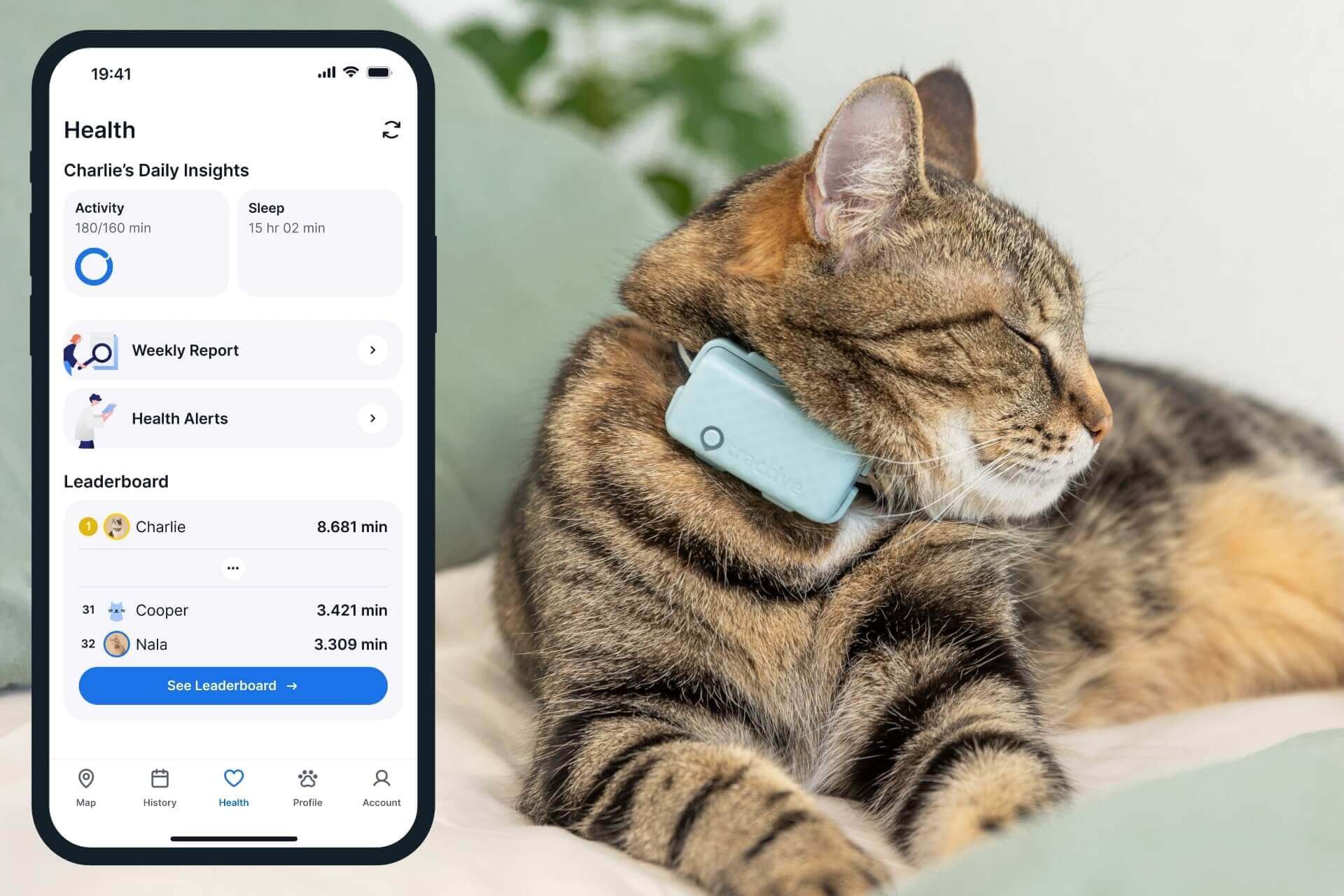
Your furry friend’s health and wellbeing means as much as to us as it does to you. So we’ve made it a priority to only share medically-relevant content on our blog. This post was checked, double-checked, and medically verified by Georgia-based vet, Dr. Dwight Alleyne.

Dr. Dwight Alleyne, DVM
Originally from Long Island, New York, Dr. Alleyne began his career at a no-kill animal shelter before becoming a licensed veterinary technician. He graduated from Cornell University Veterinary College in 2006 and completed an internship at Purdue University. Now practicing in Georgia, Dr. Alleyne specializes in soft tissue surgery and ultrasounds. He also writes pet health articles on his website, “The Animal Doctor Blog” (www.anmldrblog.com).
